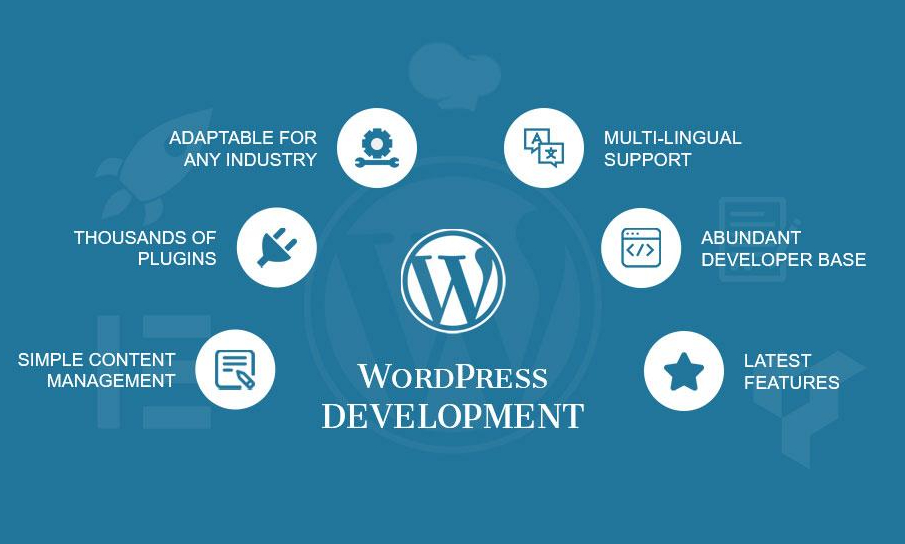What Is the Difference Between WordPress and WooCommerce? Key Features Explained
When I first started building websites I kept hearing about WordPress and WooCommerce but it wasn’t clear how they were different. Both names pop up everywhere in the world of online business and blogging yet they serve unique purposes that can be confusing for beginners.
I’ve noticed many people use these terms interchangeably but there’s a big distinction between them. Understanding what sets WordPress apart from WooCommerce is key if you want to create a website or launch an online store. Let me break down the basics so you can decide which platform fits your goals.
Understanding WordPress: Features and Functionality

WordPress operates as an open-source content management system, powering over 43% of sites globally, according to W3Techs. I access its dashboard to create, edit, and organize content like blog posts, pages, images, or video embeds. Users install themes for design control and plugins for added features, such as SEO optimization, contact forms, and analytics.
WordPress supports various site types—including blogs, portfolios, information sites, and news hubs. I control user permissions with role-based access, giving certain users editing rights and others limited viewing. The platform’s block editor enables editing with drag-and-drop modules and reusable templates.
Automatic updates and a large support community reduce security and maintenance burdens. I rely on daily backups, anti-spam plugins, and regular version upgrades for protection. Extensive language support helps me reach global audiences, and mobile-friendly themes ensure usability across devices.
Key WordPress Features Table
| Feature | Description | Example Use Case |
|---|---|---|
| Content Management | Create, edit, and schedule posts or pages | Publishing news articles |
| Themes & Design | Choose/install themes for layout and style | Branding a tech portfolio |
| Plugins Integration | Extend functionality with 59,000+ plugins | Add SEO tools or contact forms |
| User Roles | Assign roles: admin, editor, author, etc. | Team manages a multi-author blog |
| Security Updates | Auto-updates and plugin-based security | Prevent brute-force attacks |
| Internationalization | Built-in multilingual and translation tools | Launching French and Spanish sites |
| Mobile Responsiveness | Responsive templates for smartphones/tablets | Readers access content on mobile devices |
WordPress provides a flexible foundation for diverse websites, forming the base for WooCommerce integration when I want to add e-commerce capabilities.
Exploring WooCommerce: An Overview

WooCommerce adds e-commerce functionality to WordPress-powered websites. I use it to turn a standard site into a fully operable online store with product listings, cart management, and secure checkout options. Automattic, the developer behind WordPress.com, maintains WooCommerce and ensures regular updates and feature improvements.
WooCommerce supports selling physical goods, digital downloads, and services. I can manage unlimited products, categories, and variations like size or color. Integrated payment gateways include PayPal, Stripe, and direct bank transfer, with extra gateways available through extensions.
The extension ecosystem of WooCommerce includes inventory management tools, advanced shipping calculators, marketing add-ons, and third-party integrations. I customize checkout fields, automate tax calculations, and track sales performance with built-in reporting features.
Plugin scalability covers small stores handling dozens of orders and large sites processing thousands of monthly transactions. Theme compatibility and custom development options allow tailored storefronts for specific brands or industries.
WooCommerce Core Features Table
| Feature | Description |
|---|---|
| Product Management | Add unlimited physical, digital, and grouped products |
| Order Management | Track order statuses, edit orders, manage refunds |
| Payment Integration | Process payments via PayPal, Stripe, bank transfer |
| Shipping Options | Configure flat rate, free, and local pickup shipping |
| Tax Automation | Automate sales tax calculations and invoices |
| Reporting Tools | Access sales, product, and customer analytics |
| Extension Support | Add subscriptions, bookings, advanced SEO, or multi-vendor features with plugins |
WooCommerce leverages the versatility of WordPress, letting me blend e-commerce needs with content, memberships, or community features. Extending e-commerce sites with plugins streamlines casino sites, event ticketing platforms, and digital marketplaces, as long as WordPress is the base system.
Key Differences Between WordPress and WooCommerce
WordPress and WooCommerce connect but serve different main functions for site owners. I compare their core focuses, distinguishing features, setup flows, and typical expenses below.
Core Purpose and Usage
WordPress manages content for various sites, while WooCommerce enables e-commerce within WordPress.
- WordPress runs blogs, portfolios, news outlets, nonprofit sites, and corporate pages. For example, companies use it for internal portals, while bloggers use it for personal diaries.
- WooCommerce transforms a WordPress site into an online store, supporting physical products, digital goods, event tickets, and membership sales. WooCommerce doesn’t operate independently—it’s always a plugin on WordPress.
| Platform | Main Function | Example Use Case | Runs Standalone |
|---|---|---|---|
| WordPress | Content management | Blog or business site | Yes |
| WooCommerce | E-commerce functionality | Online shop for products | No (needs WP) |
Features and Extensions
WordPress supports thousands of plugins and themes to extend site design and features, such as SEO tools, security enhancements, and custom layouts. WooCommerce integrates with payment gateways, shipping calculators, inventory managers, and marketing tools, all tailored for store operations.
- WordPress plugins include Jetpack, Yoast SEO, and Akismet. Themes range from Astra to OceanWP.
- WooCommerce extends using add-ons for subscriptions, bookings, payment processors like PayPal, and casino integrations for gaming websites focused on regulated online gaming.
| Feature/Extension Area | WordPress Example | WooCommerce Example |
|---|---|---|
| Design | Custom theme library | Storefront theme |
| SEO | Yoast SEO plugin | Product-specific SEO tools |
| Payments | Stripe integration | WooCommerce PayPal/Stripe |
| Casino Integration | Not available | Gambling gateway add-on |
Setup and Customization

WordPress installs via most hosts with a one-click process and provides a dashboard for theme and plugin management. WooCommerce adds setup wizards for currencies, taxes, shipping zones, and payment options.
- WordPress offers block editing, media handling, and simple migration tools.
- WooCommerce setup guides users through configuring products, payment processors, and order workflows. Customization expands with extensions for coupons, memberships, and even casino product types if licensed appropriately.
Pricing and Costs
WordPress core software is free. Costs come from premium themes, plugins, and hosting.
WooCommerce itself is free, but transaction fees, commercial add-ons (advanced shipping, booking, casino gateway integrations), and payment gateway fees increase overall expenses.
| Expense Type | WordPress Typical Cost | WooCommerce Typical Cost |
|---|---|---|
| Core Software | $0 | $0 |
| Hosting | $4–$40/month | Same as WP |
| Premium Themes/Plugins | $29–$200/year | $49–$300/year |
| Payments/Extensions | N/A | 2.9%–3.5% + add-on fees |
| Casino Integrations | N/A | $500–$2,500+ (licensed) |
WordPress delivers flexible content sites, while WooCommerce brings full-featured e-commerce—including options tailored for regulated industries such as online casinos—within the same environment.
Choosing the Right Platform for Your Needs
Selecting between WordPress and WooCommerce depends on project requirements, content focus, and business goals. WordPress primarily fits informational, portfolio, or blog-focused sites. WooCommerce suits online stores needing extensive e-commerce functionality.
Main Considerations for Platform Selection:
- Site Purpose: WordPress handles content-driven sites, like blogs, news, or corporate portfolios. WooCommerce supports transactional e-commerce, such as product sales, service bookings, or digital downloads.
- Required Features: WordPress core offers blogging, static pages, and community plugins. WooCommerce adds product inventory, cart management, secure checkout, sales reports, and integrations with payment gateways.
- Customization and Extensions: Both platforms support third-party extensions. WordPress extensions serve SEO, analytics, or member access examples. WooCommerce plug-ins enable payment processors, shipping tools, or tax calculators.
- Scalability and Complexity: Simple content sites scale best on WordPress alone. Multi-product stores and marketplaces scale through WooCommerce-specific extensions and resource allocation.
- Technical Skill Level: WordPress setup suits beginners or those with limited technical experience. WooCommerce e-commerce setup requires familiarity with transaction systems, payment integrations, and security practices.
WordPress vs WooCommerce: Feature Overview
| Feature | WordPress (Core) | WooCommerce (Add-on) |
|---|---|---|
| Primary Use | Content management | E-commerce, online sales |
| Supported Site Types | Blogs, portfolios, info | Online stores, marketplaces |
| Product Management | No | Yes |
| Payment Gateways | No | Yes, PayPal, Stripe, others |
| Reporting Tools | Basic analytics plugins | Sales, inventory, orders |
| Membership Options | Yes, via plugins | Yes, via WooCommerce extensions |
| Setup Complexity | Low | Medium to high |
| Example Extensions | SEO, page builders | Shipping, tax, marketing tools |
Online Casino Integration Feature Comparison
| E-commerce Functionality | WordPress Only | WooCommerce with Add-ons |
|---|---|---|
| Casino Plugin Availability | Limited | Dedicated casino integrations |
| Payment Options for Gaming | Manual integration | Specialized gateways (PayPal, Crypto) |
| User Account Management | Standard roles | Enhanced for user bets, balances |
| Regulatory Compliance Tools | Minimal | Advanced, via industry add-ons |
When I choose the right platform, alignment with content type, business scale, and feature needs guides my decision. For casino-related projects, WooCommerce supports dedicated plugins for advanced gaming, payment, and compliance functions, constraints being industry regulations and plugin quality. For content-first or non-transactional sites, I use WordPress core, with the option to add WooCommerce if e-commerce becomes a focus.
Conclusion
Choosing between WordPress and WooCommerce really comes down to your website’s main goal. I always look at what I want my site to achieve before making a decision. If I need to share content or build a portfolio, WordPress alone covers everything I need. When I’m ready to sell products or services, WooCommerce gives me the tools to turn my site into a powerful online store. Both platforms work seamlessly together, so I can always expand my site as my business grows.
Frequently Asked Questions
What is the main difference between WordPress and WooCommerce?
WordPress is a content management system (CMS) used for creating and managing websites, blogs, or portfolios, while WooCommerce is a plugin that adds e-commerce features to WordPress, enabling you to sell products and services online.
Can I use WooCommerce without WordPress?
No, WooCommerce requires WordPress to function. It is a plugin specifically built to add e-commerce capabilities to WordPress-powered websites.
Is WordPress free to use?
Yes, the core WordPress software is free and open-source. However, you may incur costs for premium themes, plugins, hosting, or additional services.
Does WooCommerce cost money?
The basic WooCommerce plugin is free, but running an online store may involve expenses like payment gateway fees, premium extensions, hosting, and specific service integrations.
Do I need WooCommerce for a simple blog or business website?
No, you do not need WooCommerce for a blog, portfolio, or informational website. WordPress alone is sufficient unless you want to sell products or services directly from your site.
What types of sites are best built with WordPress?
WordPress is ideal for blogs, portfolios, company pages, news sites, and any website focused mainly on content rather than selling products online.
What types of sites are best built with WooCommerce?
WooCommerce is best for websites focused on selling physical goods, digital downloads, or services, such as online stores and e-commerce businesses.
How easy is it to set up WordPress or WooCommerce?
WordPress is straightforward to install and manage, even for beginners. WooCommerce adds a setup wizard to help users configure their online store, but may require more steps for full store functionality.
Can I add WooCommerce to my existing WordPress site later?
Yes, you can install WooCommerce on any existing WordPress site at any time to add e-commerce features as your business grows or needs change.
What should I consider when choosing between WordPress and WooCommerce?
Consider your site’s main focus—content or commerce—along with your required features, customization needs, scalability, and your own technical skill level when choosing between WordPress and WooCommerce.

